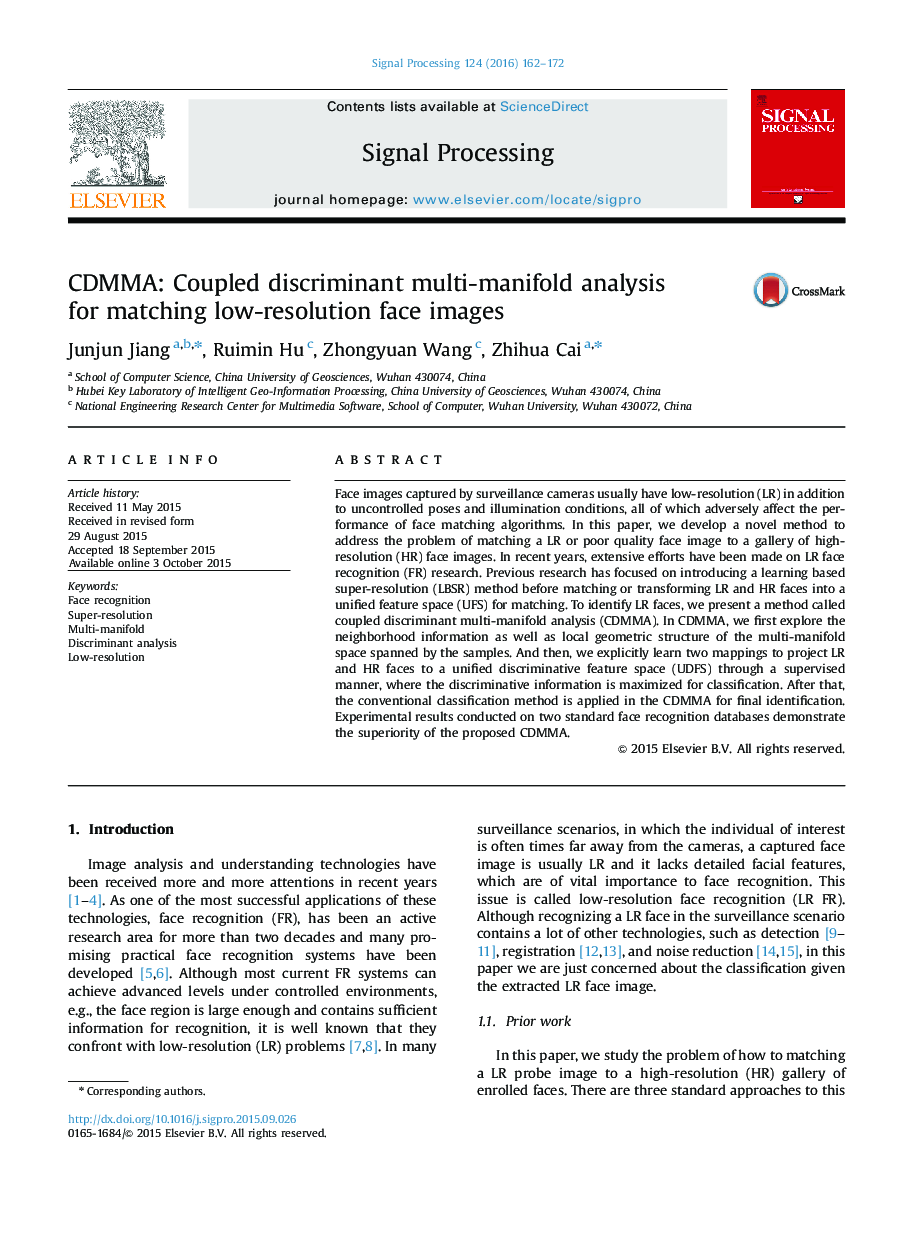| Article ID | Journal | Published Year | Pages | File Type |
|---|---|---|---|---|
| 562241 | Signal Processing | 2016 | 11 Pages |
•We investigate the low-resolution face recognition problem in this paper.•A coupled discriminant multi-manifold analysis is proposed to project the low- and high- resolution faces to the unified discriminative feature space.•Experiments on standard face databases demonstrate the effectiveness of the proposed method.
Face images captured by surveillance cameras usually have low-resolution (LR) in addition to uncontrolled poses and illumination conditions, all of which adversely affect the performance of face matching algorithms. In this paper, we develop a novel method to address the problem of matching a LR or poor quality face image to a gallery of high-resolution (HR) face images. In recent years, extensive efforts have been made on LR face recognition (FR) research. Previous research has focused on introducing a learning based super-resolution (LBSR) method before matching or transforming LR and HR faces into a unified feature space (UFS) for matching. To identify LR faces, we present a method called coupled discriminant multi-manifold analysis (CDMMA). In CDMMA, we first explore the neighborhood information as well as local geometric structure of the multi-manifold space spanned by the samples. And then, we explicitly learn two mappings to project LR and HR faces to a unified discriminative feature space (UDFS) through a supervised manner, where the discriminative information is maximized for classification. After that, the conventional classification method is applied in the CDMMA for final identification. Experimental results conducted on two standard face recognition databases demonstrate the superiority of the proposed CDMMA.
